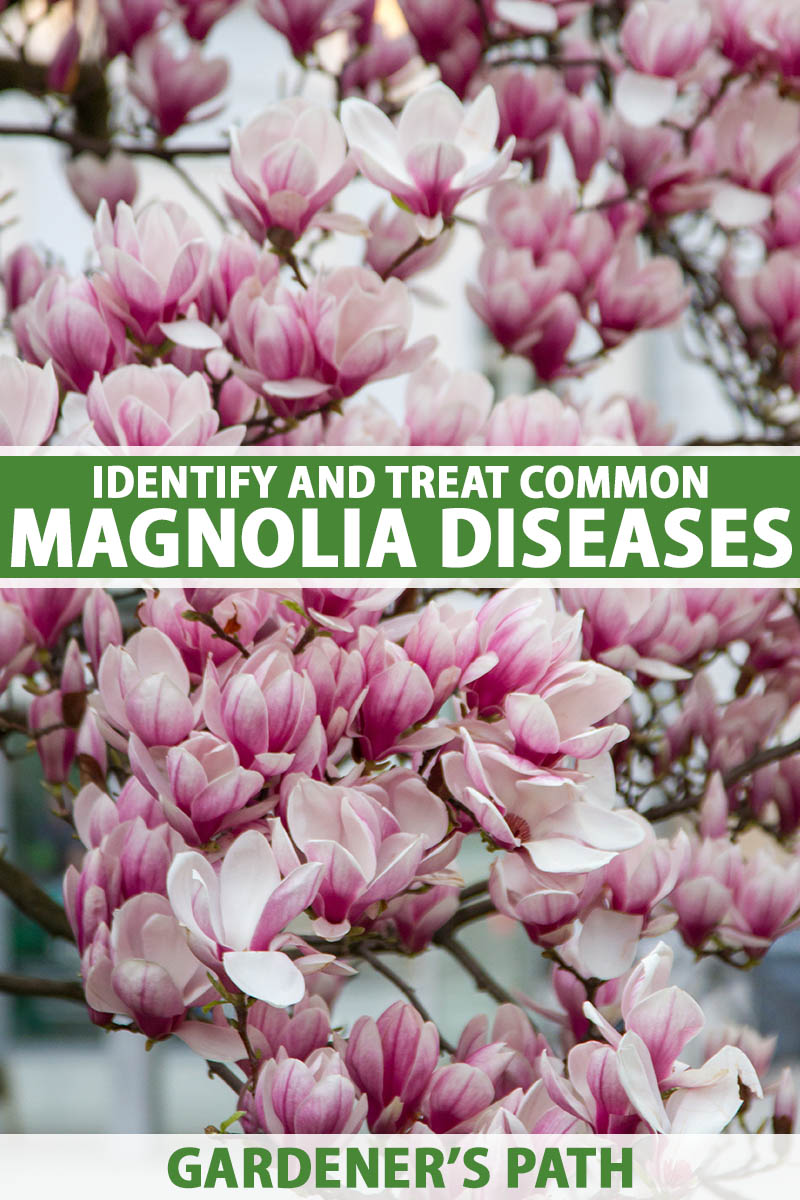With lush foliage, showy blooms, and aesthetically pleasing forms, magnolia trees (Magnolia spp.) are beloved members of any ornamental landscape.
Unfortunately, their beauty can be marred when disease-causing pathogens infect magnolia trees.
Sometimes magnolia diseases can be pretty innocuous, while other times they’re fearsome, hard-to-beat afflictions.
But no matter the disease you’re fighting, there’s almost always something you can do.


We link to vendors to help you find relevant products. If you buy from one of our links, we may earn a commission.
In this guide, we’ll discuss 13 common magnolia diseases, and how to identify and treat them, so you can bring your tree back to full health.
Here’s what I’ll cover:
13 Magnolia Tree Diseases
A quick reminder for keeping any plant disease-free: proper and sanitary cultivation is key.
A healthy plant is better at fighting diseases than one that’s already struggling to stay alive. By providing your magnolia with everything it needs to thrive, you’ll also improve the odds that it’ll survive threats to its health.
If you need a refresher on cultivating magnolias, check out our growing guide.
And I know “sanitary” is a bit oxymoronic, since garden work is naturally a dirty endeavor.
But by keeping your gardening implements sterile and being mindful of how pathogens can spread, you’ll be doing your magnolia trees, and other plants in your garden, a huge favor.
1. Algal Leaf Spot
If you didn’t think that algae could afflict land-dwelling trees… think again.
Caused by the parasitic alga Cephaleuros virescens, algal leaf spot spreads by spores that travel via wind and rain to nearby plant surfaces. Multiplying in number, the spores collect in raised blotches or patches on leaf and stem surfaces.


Grayish-green, brown, or orangish in color, these spots cause localized chlorosis, necrosis, and leaf drop, along with overall plant weakness.
The causal algae overwinters in infected foliage and twigs, whether they’re on the plant or on the ground. The following year, the cycle begins anew.
Eliminate possible overwintering sites by raking up nearby plant detritus, and remove spotted leaves and twigs whenever you first notice symptoms.
Properly space and prune your magnolia trees to allow for adequate airflow within their canopies, which alleviates those wet, humid conditions that many pathogens love.
If the majority of the leaves on your tree are symptomatic, you can apply a copper fungicide.
Just know that fungicide sprays typically work better as a protectant, rather than a treatment. So make a note in your diary to spray your magnolia preventatively the following spring.


Southern Ag Copper Fungicide
Southern Ag’s liquid copper fungicide is ideal, and you can find it available via Amazon.
If an infected tree gives you significant trouble year after year despite your best efforts, removing the plant and destroying it may be a smart choice.
2. Anthracnose
Caused by species in the Colletotrichum genus of fungi, anthracnose and its symptoms are about as subtle as an open-carried .50-cal revolver at a Texas gas station. Not very.
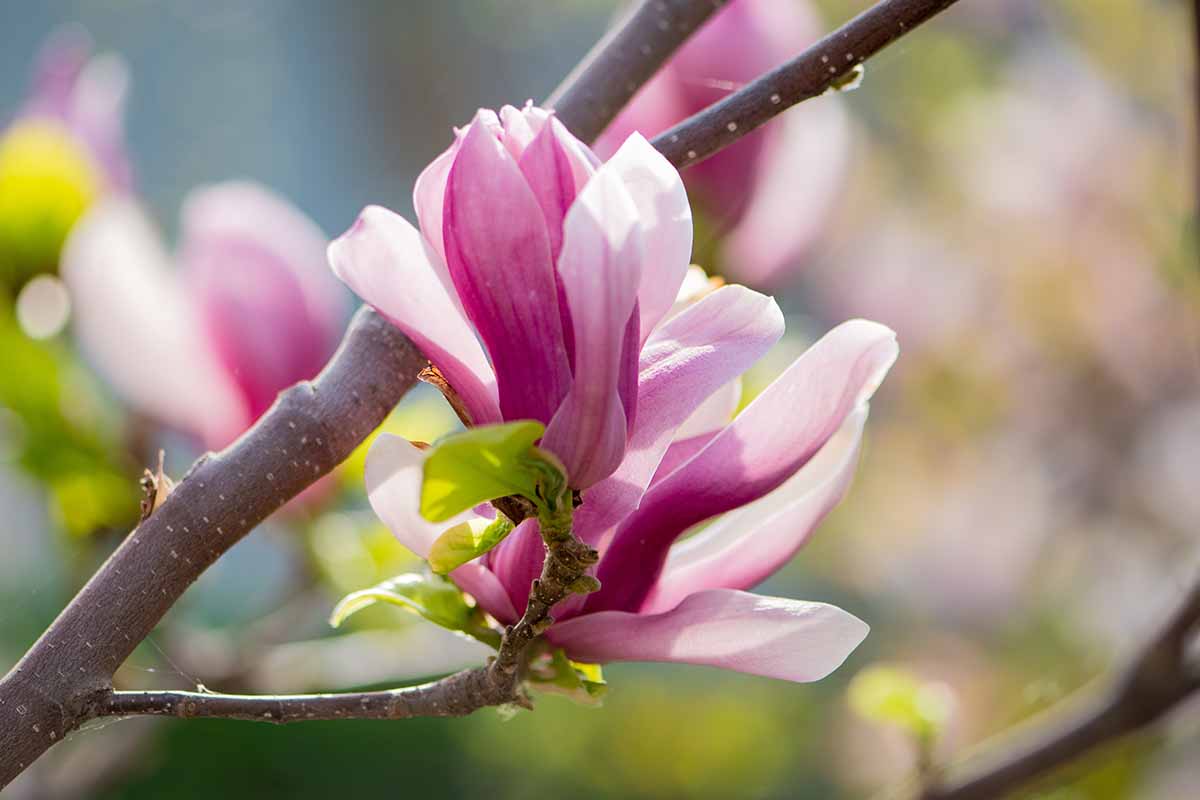

Overwintering in dead leaves and branches, the spores of the causal pathogen spread via splashing water to nearby foliage, causing large, angular spots near leaf margins.
As the disease progresses, these spots develop a burned look, surrounded by a yellow halo of discoloration.
On upper surfaces of the magnolia foliage, the spots develop blister-like fruiting bodies, which ooze masses of pink spores. Eventually, entire leaves can turn chlorotic yellow and drop.
Foliage should be removed as soon as symptomatic spots are noticed. Nearby leaf and twig detritus should be collected and disposed of, as well.
If the majority of leaves on your magnolia start to become symptomatic, a fungicide program may be needed – look for products containing mancozeb as a main active ingredient.


Bonide Mancozeb Flowable
You can find Bonide’s mancozeb flowable with zinc in 16-ounce concentrate available at Amazon.
Be sure to follow the manufacturer’s directions for application.
3. Bacterial Blight
Blight, noun: a thing that spoils or damages something. In the case of bacterial blight, that sounds about right.
The notable symptoms of bacterial blight – caused by Pseudomonas syringae pv. syringae and Pseudomonas cichorii – are small, dark, necrotic spots, each surrounded by a yellow halo, which slowly expand into blights of larger, more irregular lesions that interfere with plant photosynthesis.
Spreading via wind, insects, or contaminated tools, the causal bacteria enters plants through flower buds and/or wounds, leading to the development of sunken, infected cankers.


Magnolia branches with cankers can exhibit foliar and stem wilt. Oozing dark and sticky fluid, these cankers also act as overwintering sites for the pathogen.
Although typically seen more often in plant nurseries than the landscape, bacterial blight can still be a dangerous threat to your trees.
Prune infected shoots when you notice them, making sure to sterilize your tools between cuts.
If pruning your magnolia doesn’t provide satisfactory control, copper-based bactericides can be used to manage the disease in susceptible environments.
4. Bacterial Leaf Scorch
A systemic, chronic, and incurable disease. Gotta love those.
Bacterial leaf scorch kicks off with Xylella fastidiosa bacteria invading a magnolia tree’s xylem, which is basically a plant’s internal water plumbing.
Overwintering in the xylem year after year, the bacteria can access any and all branches connected to the trunk. Leaves turn brown in midsummer, starting with the older ones and ending with those closest to the branch tips.
Separated from the healthy tissue by a thin yellow border, the brown sections gradually work towards the center of each leaf, eventually causing them to turn entirely brown and drop from the tree.
As years pass, this browning-and-dropping occurs earlier and earlier in the season, weakening and killing parts of the tree in bits and pieces until the entire plant eventually perishes.
As bacterial leaf scorch is spread via xylem-feeding insects such as leafhoppers and spittlebugs, it pays to manage your local pests.
When branches start to turn brown and die off, remove them. If entire trees are in severe decline, remove those as well – you may need to recruit a professional’s help for this.
You can try springtime injections of oxytetracycline antibiotics into the root flare, but those will most likely only reduce bacterium levels enough to delay symptoms by a couple of weeks.
You can consult an arborist if you’re curious, but otherwise, I’d take solace in what J. R. R. Tolkien called “the long defeat,” and remove infected specimens.
5. Bacterial Leaf Spot
Save for the causal pathogens being species of bacteria in the Xanthomonas genus rather than Pseudomonas, bacterial leaf spot causes similar symptoms to those of bacterial blight: dark foliar spots surrounded by faint yellow discoloration, which leads to hindered photosynthesis and reduced aesthetics.
And the “hows” of managing both in magnolias are pretty similar. Prune affected plant tissue and spray with copper-based bactericides in the case of extensive infection.
6. Cankers
We’ve mentioned these already, but they’re definitely harmful and annoying enough to warrant their own entry.
Cankers are necrotic, localized lesions that manifest on the branches, trunks, and/or roots of trees. Often sunken and rounded in appearance, cankers also tend to exhibit discoloration and ooze with gnarly, sticky fluid.
Caused by a variety of different bacterial or fungal pathogens after mechanical or environmental damage, cankers can cause local or systemic dysfunction in foliage and bark. Foliage will turn yellow, brown, and wilted, bark will peel, and plant tissues will die.
As cankers can occur via wounds, it pays to keep your magnolias safe from blades, trimmers, and tree-climbing children.
Prune with caution, give root flares a wide berth when working in the vicinity, and limit Little Timmy’s climbing to the playground until he learns to not peel away bark with his foot placements.
When you notice a canker on a magnolia branch, prune the entire branch. Make your cuts several inches below the canker towards the trunk, to stay on the safe side.
If cankers are on the trunk or roots, I’d recommend you consult with an arborist or plant pathologist – removing those takes skill that’s hard to learn as an amateur.
7. Crown Gall
I will say, crown galls aren’t as gross as cankers. They are, however, rather honkin’ in size and conspicuous-ness.
Caused by the fun-to-pronounce Agrobacterium tumefaciens, crown galls are essentially tree tumors.
When A. tumefaciens bacteria in nearby soil infects a plant through wounds, it stimulates the plant to produce a large, swollen mass of tissue on trunks, stems, or even roots that provides ample resources for the pathogen to feed on and reproduce in.
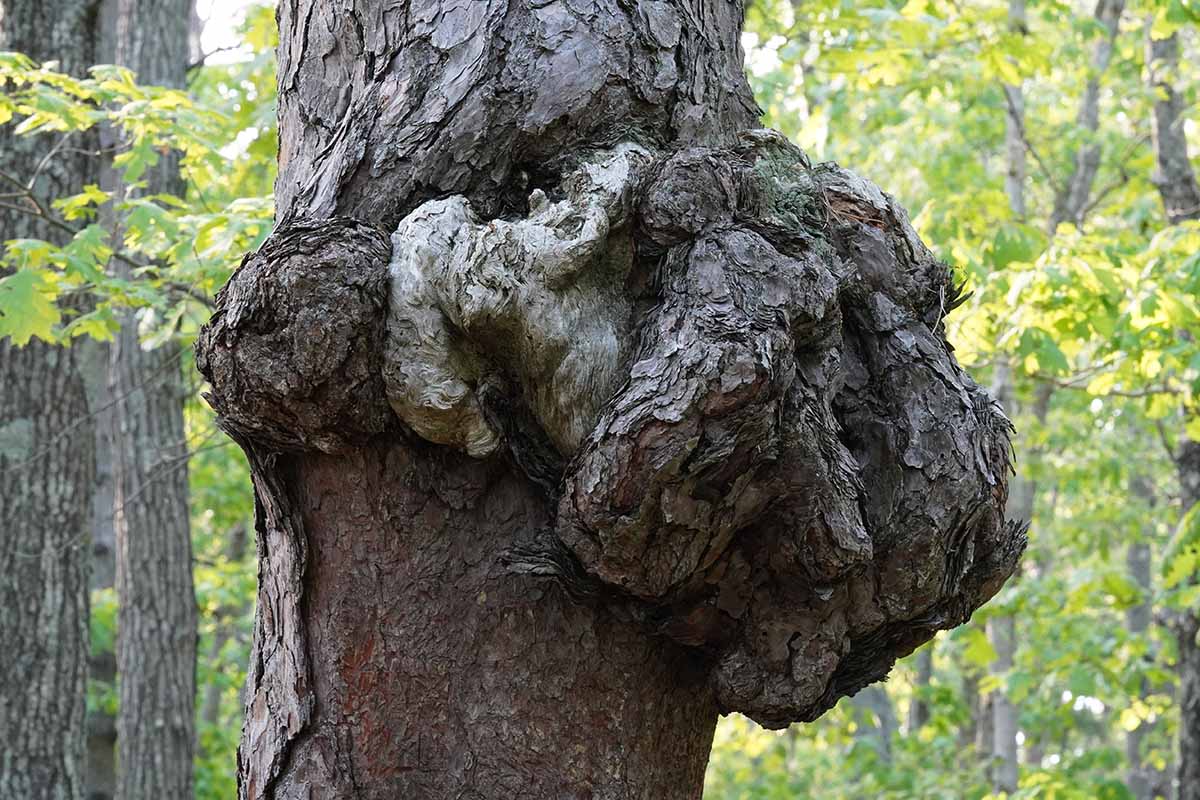

This can be harmful to young magnolia plants in particular, as gall development can stunt their growth, inhibit water and nutrient transport, and leave them top-heavy and prone to breakage.
But in older magnolias, the drawbacks of galls are cosmetic and minor.
You can cut out galls during the dry season if you know what you’re doing, or you can recruit someone with more know-how to do it for you.
If the gall takes up a large section of the trunk, you may have to remove the entire tree if its growth is extremely stunted.
You can learn more about crown gall in our guide.
8. Pestalotiopsis Leaf Spot
In case you’re wondering, it’s pronounced pesta-low-she-opsis. I didn’t know the phonetics either, until I looked it up!
Caused by fungal species in the Pestalotiopsis genus, this disease has unique symptoms: circular, necrotic, and black-bordered spots on the foliage.
Inside the black borders, the spots are an orange to tan hue. Take a closer look, and you’ll notice subtle cracking on the surface of necrotic leaf tissues, especially in older spots.
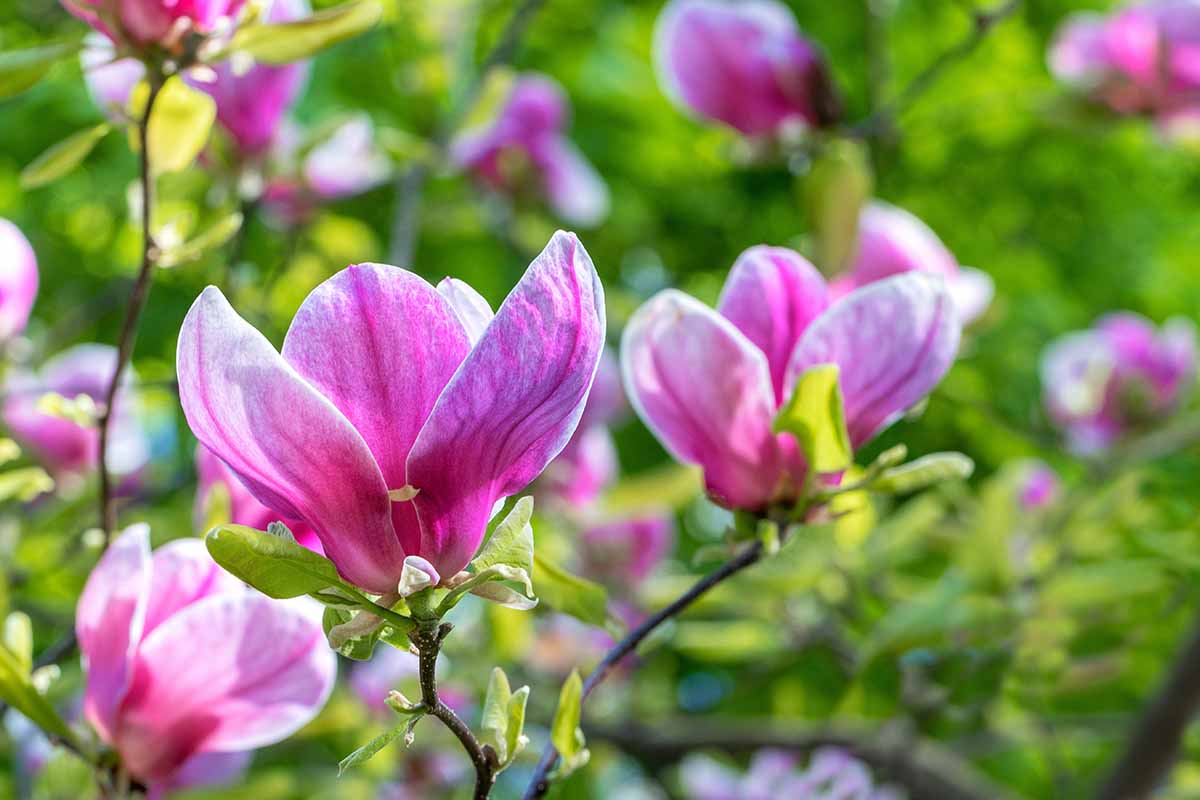

Typically in spring or fall, spores produced by the fruiting body of the fungus spread via wind and water, so it pays to watch your watering, especially during cool and overcast conditions.
Avoid splashing leaves with irrigation, but if you do end up wetting the foliage, water early enough for it to dry before nightfall.
This disease is a little unsightly and hinders photosynthesis, so you should prune infected leaves when you see them.
9. Phytophthora Root Rot
Affecting many different trees and shrubs in the landscape, Phytophthora root rot is no joke. Not that any of these diseases are, but this one falls especially flat, humor-wise.
As moisture-loving water molds (oomycetes), Phytopthora species can survive in soil for years, provided that it stays moist.
The causal pathogen spreads primarily via water, such as splashing rain, irrigation, or runoff – but can also travel via contaminated soils and garden tools.
It favors the cool and rainy weather of early spring and late fall, and doesn’t require a wound or other damage to gain entry to plant tissues.


Infection in magnolias causes the foliage to wilt, lose its vibrant color, and otherwise appear drought-stressed.
The tree bark at soil level will typically look unusually dark, and the wood underneath it will appear an unhealthy-looking reddish-brown. After a few years of declining health and putting up a fight, infected trees will most likely perish.
Make sure that your soil is very well-draining prior to planting. If you’d like, planting on a raised mound of soil can help keep water from pooling up around the roots. But make sure that the root flare of your magnolia trees are exposed!
Once the magnolia is in the ground and growing, don’t overwater, and ensure you plant in well-draining soil.
If an infected tree becomes heavily diseased and/or more trouble than it’s worth, remove it – along with the soil within the root zone – and replace it with a resistant tree such as arborvitae, elm, or ginkgo.
10. Phyllosticta Leaf Spot
A particular foe of the southern magnolia, M. grandiflora, Phyllosticta leaf spot is a fungal condition caused by Phyllosticta magnoliae.
When a pathogen is named after a plant it infects, you know that it’s an epic rivalry.


Overwintering on nearby fallen plant detritus, the fungus spreads to new leaves in spring via splashing water.
On the upper surfaces of new foliage, small purplish-black lesions form, eventually growing in size and manifesting dirty white centers while surrounded by chlorotic halos of yellow.
As with any leaf spot disease, photosynthesis is reduced and the tree’s health may suffer if the damage is extensive.
Wet, humid conditions promote disease spread, so avoid wetting the foliage and watering late in the day. If you notice any spotted leaves, remove them.
If this disease ends up infecting most of the canopy of your magnolia and becoming a bigger problem than pruning can fix, early-season applications of copper fungicides can help prevent it and limit its spread.
11. Powdery Mildew
It’s kinda nice when the name of a disease lets you know its symptoms. Exhibit A: powdery mildew.
In magnolias, the causal fungus is usually either Microsphaera penicillata or Phyllactinia corylea.
Spreading by wind in spring to early summer, the spores cause white powdery patches to form on upper surfaces of foliage, which can lead to curled leaves and stunted growth overall.
A particular problem when days are warm to hot and nights are cool and dewey, this disease overwinters as fungal mycelium in dormant buds or as spores on fallen leaves.
Properly prune your magnolia tree canopy to allow for airflow to dry the foliage. If you notice severely mildewy foliage and branches, cut them right away.
12. Verticillium Wilt
When it comes to killing your beloved magnolia trees, Verticillium wilt doesn’t waste time. The one time you wouldn’t mind a little dilly-dallying…
Verticillium wilt kicks off with the invasion of fungal Verticillium species such as V. albo-atrum or V. dahlia into a tree’s wounded roots.
You can tell you’re dealing with Verticillium wilt by a general browning of the inner sapwood, should you cut away a stem’s bark to take a look.
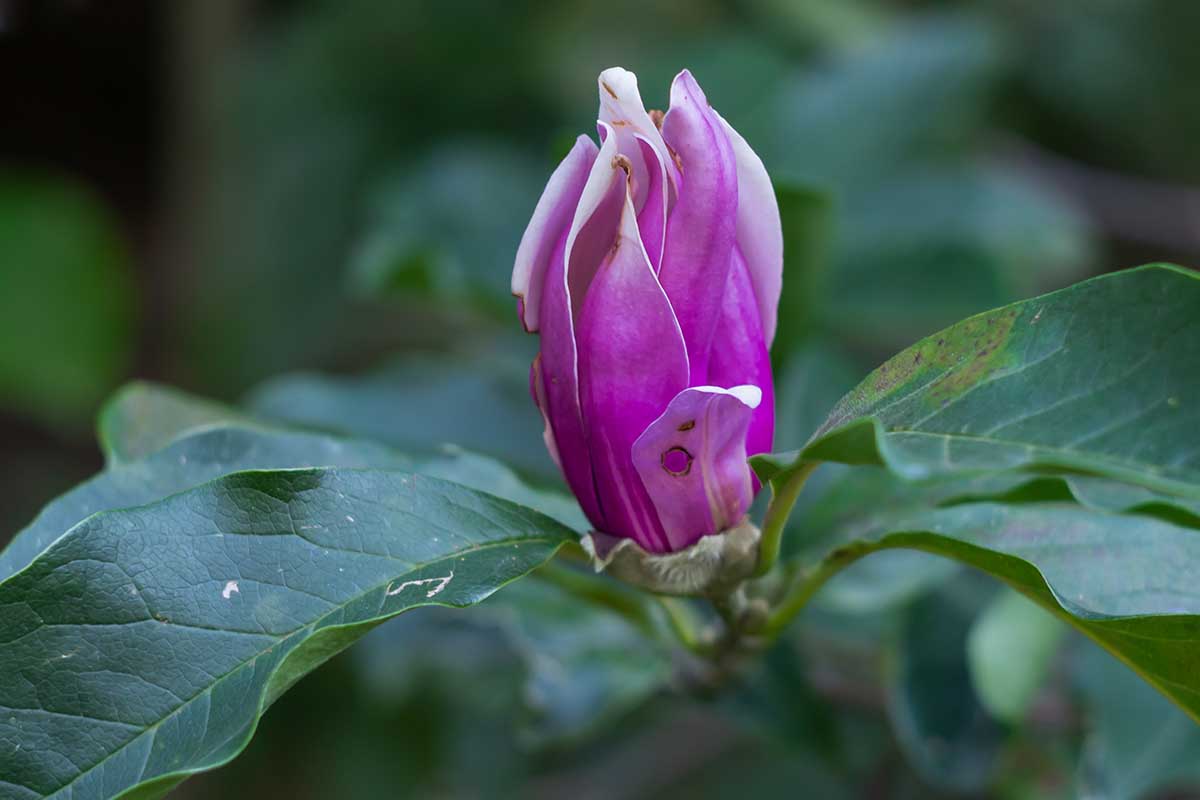

This infection clogs up the vascular tissues and leads to leaf and branch dieback, typically on one side of the plant.
The stress of the disease allows for opportunistic fungi to invade the tree, tag teaming it into further decline. In a year or two, the plant will most likely die.
The causal fungi live in soil and spread via wind, soil disturbance, and gardening tools.
Stressed-out roots allow for the the pathogen to enter the magnolia, so be sure to water properly – not too much, not too little – and be careful not to accidentally wound the tree with pruning tools, weed whackers, or runaway lawn mowers.
I hate to say it, but if your trees are sick, remove ’em and replace them with more resistant trees such as oaks, conifers, or dogwoods.
13. Wetwood
I bet you can guess wetwood’s signature symptom.
Also known as slime flux, wetwood is caused by the ingress of various bacteria into tree wounds, primarily those in the roots.
Bacterial fermentation produces gaseous and liquid byproducts, which leads to an ooze of dark liquid from tree crotches, bark cracks, and pruning wounds that reaches its peak in summertime.
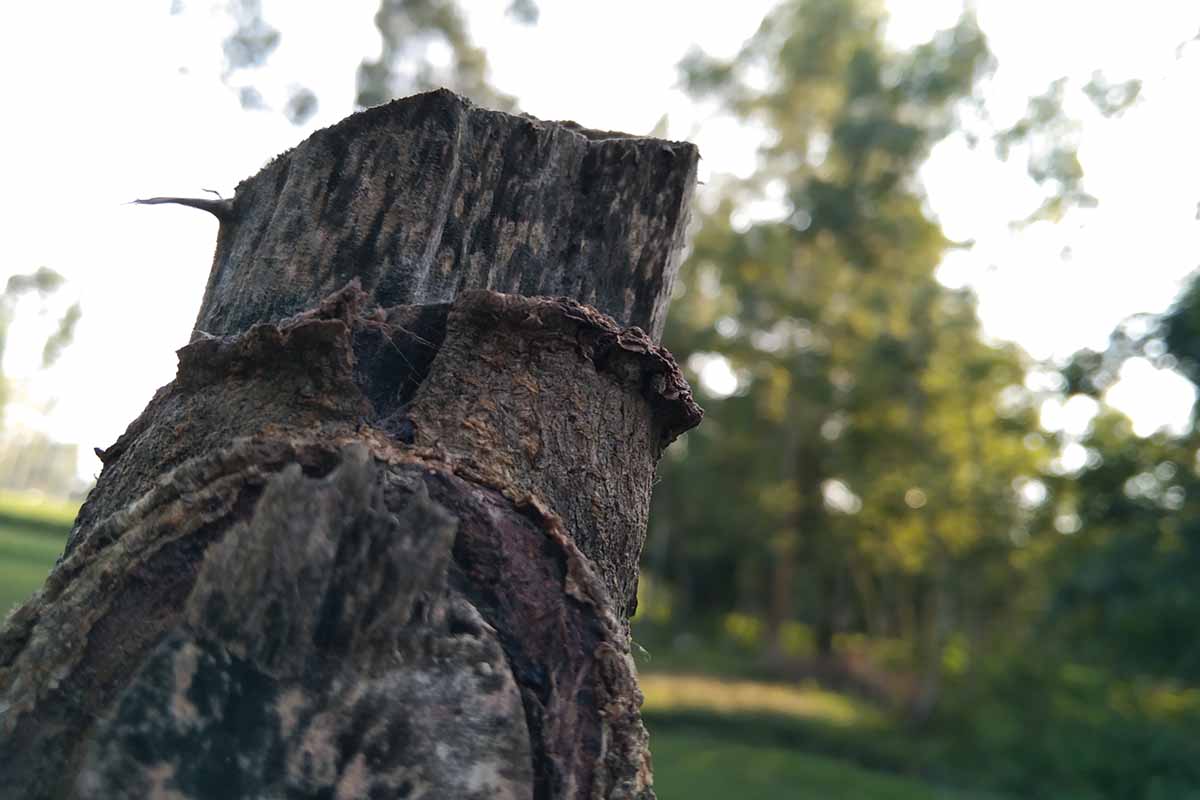

This gross liquid also moves within a plant, causing wilting, defoliation, branch dieback, and reduced vigor. Thankfully, plant death is a rare occurrence.
Aside from avoiding wounds and removing severely symptomatic branches, not much can be done about wetwood. It’s kinda like the runny nose of magnolia trees, if that’s any consolation.
Aren’t You Sick of Magnolia Sickness?
Don’t listen to Disturbed’s David Dramian and get “Down with the Sickness.” They’re your beautiful magnolias, darn it! It’s time for action!
With this guide, you can hopefully keep your magnolia trees alive and well for the long haul.
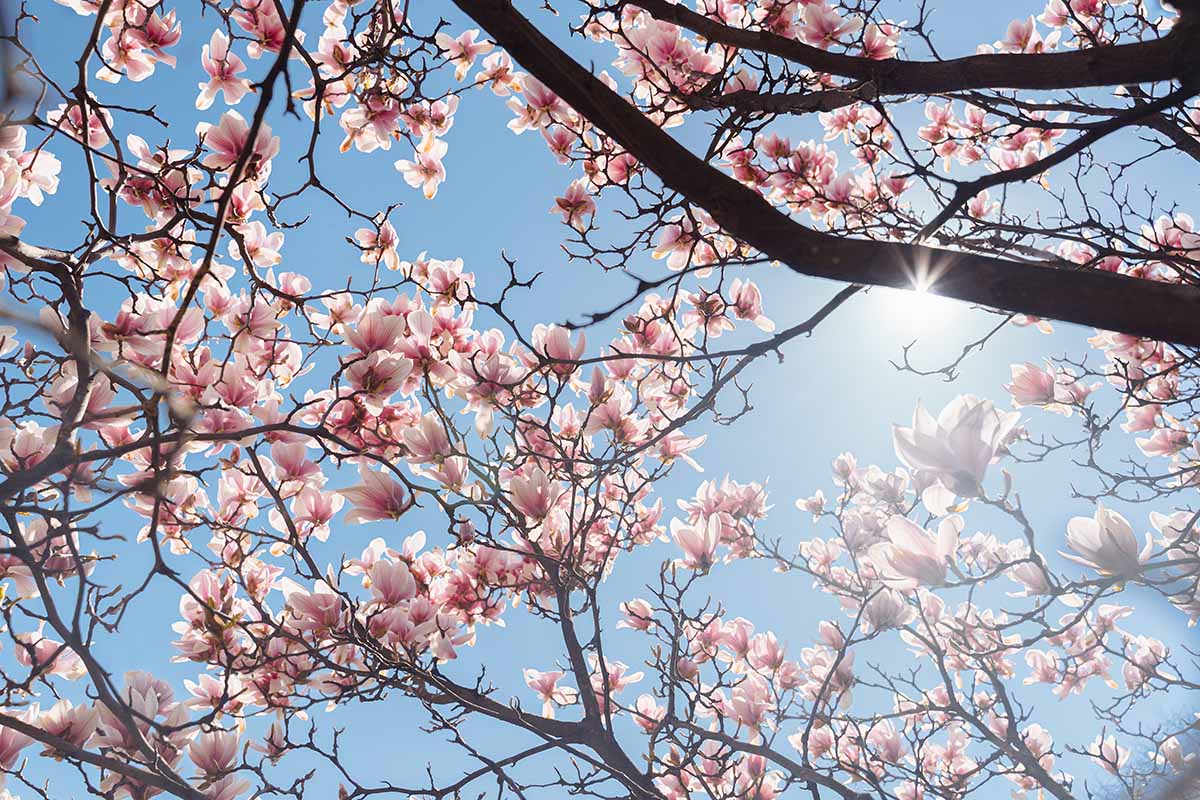

It may be a hassle at times, but when such gorgeous plants are on the line, problems are definitely worth addressing. Questions? Random remarks? Time to visit the comments section below!
And for more magnolia-related information, check out these guides next:


